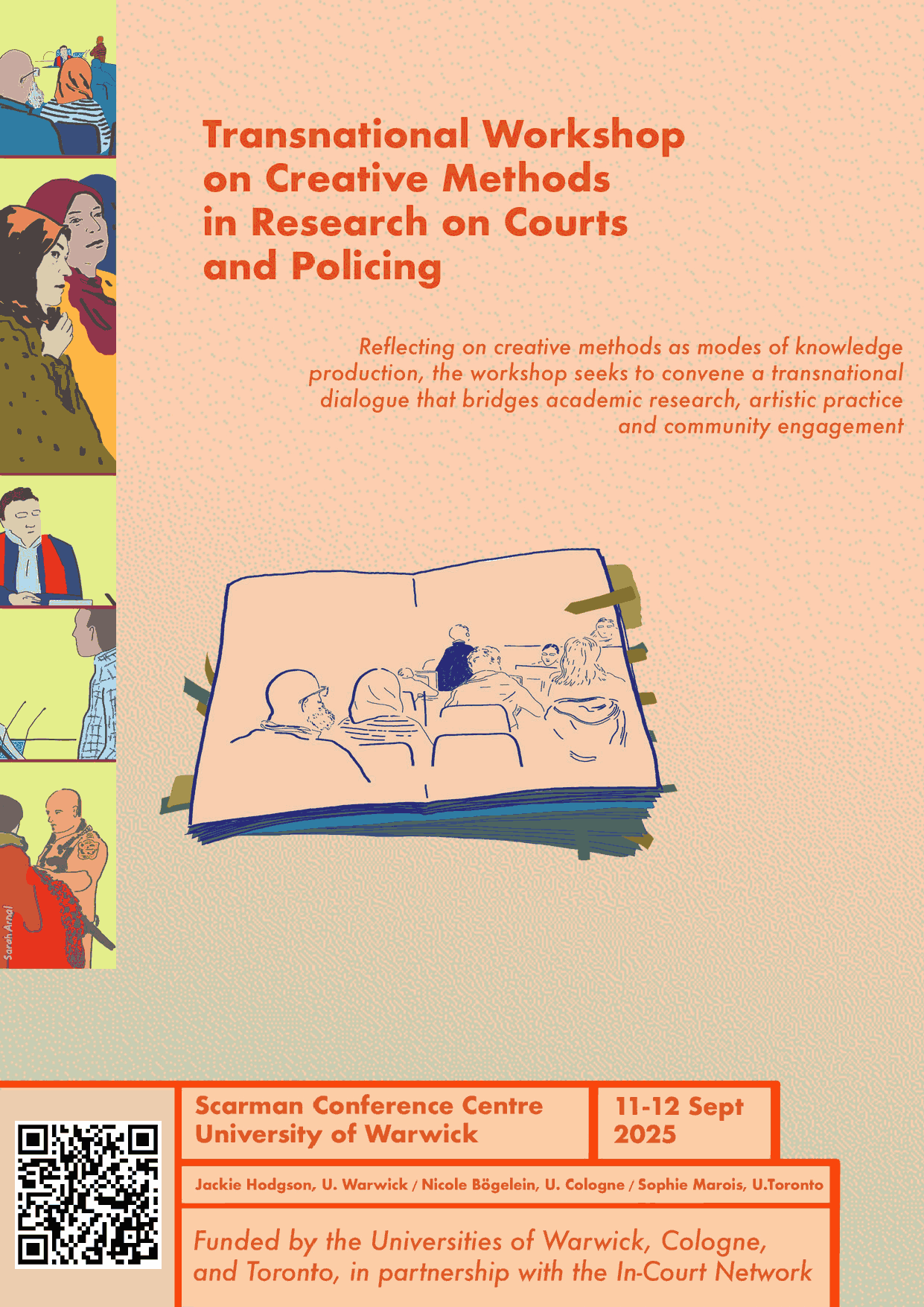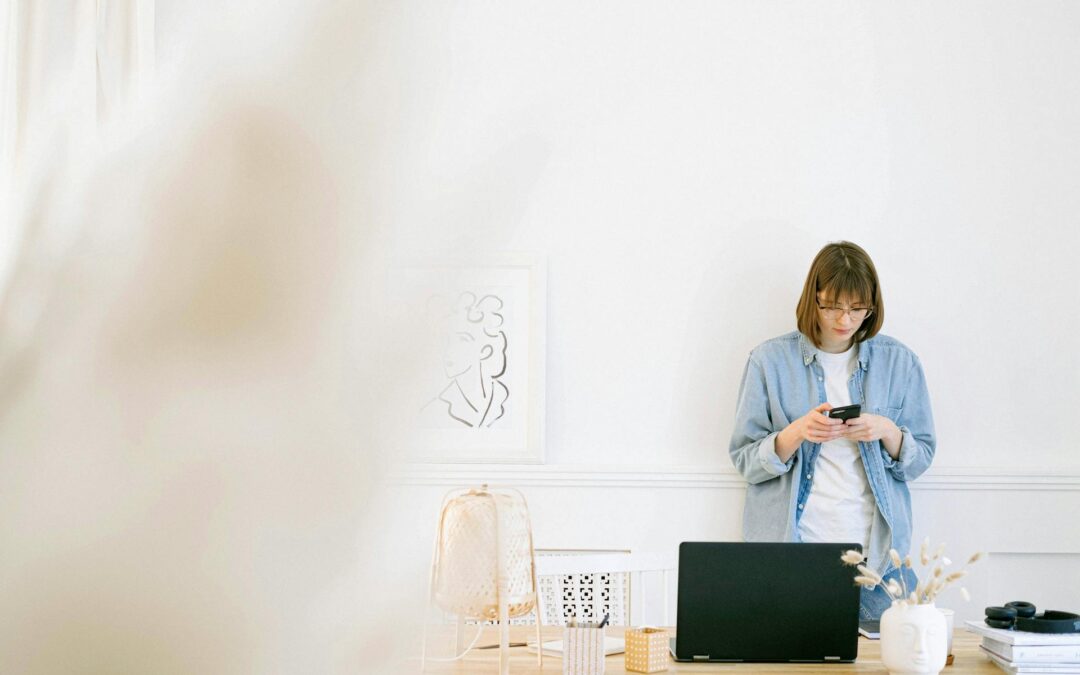Creative methods in research: how innovative arts-led approaches are driving changes across law, policing, and the humanities

Creative and arts-led methods are currently gaining ground in socio-legal and humanities research, refashioning the ways in which we approach justice and community engagement through research. Strong, interdisciplinary and collaborative research infrastructures are vital to the successful employment of creative research methods in affecting change. These infrastructures are often cross-sector, community-based, practice-led, and increasingly transnational. In this post, Professor Jacqueline Hodgson reflects on her work with West Midlands Police, young people, and artists in reimagining policing practices and police-community relations through creative methodologies. This and a range of other creative methods work will be further explored at an upcoming workshop this September titled “Creative Methods as Research on Courts and Policing” aiming to bring together researchers, activists and creative practitioners to shape more inclusive approaches to justice.
The rise of creative approaches in social justice research
Over the past decade, UK researchers and funders have increasingly embraced creative, arts-based approaches as necessary tools for improving justice outcomes, including policing practices and building trust and confidence in policing. From partnerships such as West Midlands Police’s collaboration with Coventry City of Culture Trust, discussed below, to the growing body of scholarship on legislative and participatory theatre, XR, and visual arts, to mention a few, creative methods are proving to be powerful instruments for societal change, providing new insights and understanding to complex issues. Moreover, ongoing research is helping to build an evidence base into how creative, practice-based approaches can inform and support reform, strengthening the case for their wider adoption across policy and research. While operating in a slightly different register, independent organisations such as the Youth Endowment Fund (whose report focuses on how creative-based interventions can divert young people from crime) have similarly called for stronger proof of impact to sustain and scale creative interventions.
There is, without doubt, a growing groundswell. Warwick’s research reflects a broader movement toward creative methodologies, gaining momentum across institutions and sectors, in different iterations and forms. During Coventry UK City of Culture, the University of Warwick funded a 3-year programme of place-based projects bringing together local groups, creatives and researchers from across academic disciplines. Coventry Creates, born out of a desire to support local artists during Covid-19 in the run-up to Coventry UK City of Culture, became a highly successful collaboration between the Universities of Warwick and Coventry that went on to attract funding from Arts Council England. The AHRC-funded “Warwick UK Cities of Culture Project” explored the impact of arts and culture on the economic and social wellbeing of culturally diverse neighbourhoods, towns and cities through the UK City of Culture programme. This included a series of papers exploring how this impact can be measured, as well as a critical examination of co-creation methods. The AHRC’s Creative Communities programme launched in 2024 and hosted by Northumbria University supports practice- and creative-based research methods to advance social innovation. As the programme itself makes clear, on the one hand, creative research methods help us reinterpret the world through different mediums. On the other, adopting practice-based methods supports diverse forms of knowledge production, all the while building capacity for sustained community engagement. As initiatives such as Creative Communities show, by focusing on co-creation, research can be reconceptualised as a place-based endeavour that can both inform policy and directly support the communities involved by amplifying underrepresented voices. In doing so, this co-creative research module contributes to innovation that is inclusive, participatory, socially grounded, and more importantly, rooted in reciprocity.
As the Law and the Humanities Map grows, we’re better able to identify and connect the research infrastructures that support novel approaches to producing and sharing knowledge. One such hub is Warwick’s Centre for Operational Police Research (COPR). In her reflections below, Professor Jacqueline Hodgson offers a vivid case study of how creative methods are redesigning the ways we are thinking about law, justice, and the humanities from the ground up. What’s more, this ongoing work will be explored in greater depth at the upcoming Creative Methods in Research on Courts and Policing Workshop (11-12 September), hosted by COPR and led by Professor Jacqueline Hodgson and colleagues from University of Toronto (PhD candidate Sophie Marois and Dr Timothy Bryan) and University of Cologne (Dr Nicole Bögelein). Read on to learn more!
Creative methods in research on courts and policing
 Creative methodologies have gained traction across socio-legal and criminological research, offering tools to engage with the lived, emotional, and structural complexities of courts and policing. They align with broader trends in contemporary ethnography (Kara, 2020), as demonstrated by Elliot and Culhane’s (2016) call for imaginative ethnographic practices, Causey’s (2017) exploration of drawing as a method, and Rumsby’s (2020) use of retrospective collaborations with illustrators to revisit ethnographic findings. Arts-led methodologies in particular, also connect with Law and Humanities scholarship, drawing on different disciplines and bodies of expertise to provide fresh insights and re-frame legal issues.
Creative methodologies have gained traction across socio-legal and criminological research, offering tools to engage with the lived, emotional, and structural complexities of courts and policing. They align with broader trends in contemporary ethnography (Kara, 2020), as demonstrated by Elliot and Culhane’s (2016) call for imaginative ethnographic practices, Causey’s (2017) exploration of drawing as a method, and Rumsby’s (2020) use of retrospective collaborations with illustrators to revisit ethnographic findings. Arts-led methodologies in particular, also connect with Law and Humanities scholarship, drawing on different disciplines and bodies of expertise to provide fresh insights and re-frame legal issues.
Co-funded with the Universities of Cologne and Toronto, the upcoming workshop at the University of Warwick (Creative Methods in Research on Courts and Policing, 11-12 September) connects researchers, activists and creatives to explore the different ways that arts-led and other creative methods form part of our research. We will look at the opportunities these methods offer, such as building spaces of trust in which to explore complex and sensitive issues; or providing less intimidating ways of participation and expression, giving voice to seldom heard groups. There are also challenges in working across different occupational groups and cultures, where expectations, expertise and approaches may differ significantly and are not always adequately respected. Many claim or aspire to co-create, but this form of collaborative working is less common in practice.
Case study: co-creating with police and young people
In my own work with Dr Rachel Lewis, originating in an evaluation of West Midlands Police’s partnership with Coventry UK City of Culture (Hodgson and Lewis 2022, 2023; Lewis and Hodgson 2025), we analyse the benefits and limitations of arts-led police-community engagement, exploring its ability to give voice to marginalised groups and generate empathy that can lead to changes in police attitudes and behaviours. These findings inform our own research practice in partnerships exploring young people’s feelings of safety and their views on policing. This includes the co-commissioning of a play (After Preston, 2023) and creative-led workshops with marginalised youth in schools, resulting in artistic outputs that express their lived experiences of policing (Keeping us Safe? 2024).
The emotions and empathy generated through creative methods are also being used to investigate issues of racism within policing in ways that challenge and potentially change behaviours in our current work with West Midlands Police (Project Seshat: Performing anti-racism within WMP, 2025). For instance, engagement with dramatic narratives as proxies for officers’ experiences can facilitate more authentic and transparent discussions. Officers went on to write their own prose and scripts as a means of exploring the nature and impact of the racism experienced within policed communities and within the police force itself. In our Empathy through Design work, (working with Dr Adela Glyn-Davies and Dr Ruth Bernatek) we are investigating the ways that we can use our own qualitative data from interviews with police and with young people, to craft narratives and use XR (mixed reality) to build police empathy with communities.
Visualising justice
Recent works also underscore the value of creative methods in research on courts. Fernandez et al. (2024) develop ‘collective ethno/graphy’ to analyse processes of depoliticisation that obscure the structural and racialised dimensions of violence as they unfold within the regulated space of the courtroom. In this approach, ethno/graphic drawing is not only a method of self-reflexivity, but also ‘a practice of representation’ and a technique of observation in its own right. Anwar and Aardse (2024) similarly combine traditional empirical methods with visual arts in order to highlight the interplay between speculative security measures and judicial processes in terrorism trials.
Beyond the courtroom, creative methods such as walking (O’Neill et al., 2021) and participatory theater (Kaptani & Yuval-Davis, 2008) offer innovative ways to examine the spatial, sensory, and dialogical aspects of justice. Graphic and visual methods can further highlight the reparative and affective capacities of creative research. Mookherjee (2022) examines how graphic ethnographies can evoke visceral experiences of fear and violence beyond the search for the ‘unsayable and unseeable,’ advancing nuanced understandings of survivors’ experiences. Martínez-López de Castro et al. (2022) discuss the importance of artistic experience for the development of empathic capacity.
We hope that this upcoming workshop will be the start of bringing together those working with creative methods as a method of research, not simply a mode of communicating or disseminating research. Co-sponsored by the Universities of Toronto and Cologne, the Warwick event is the first in what we anticipate will be a series of workshops and conferences connecting this growing community of researchers and creatives.
Mapping the evolution of research methods in law and the humanities
As Professor Hodgson’s work so powerfully demonstrates, creative methods are helping us rethink how we engage with justice, policing, and law. What we see with the Centre for Operational Police Research is how collaborative research infrastructures are critical in co-producing impactful community-rooted work. Such partnerships also get to the heart of the Mapping the Arts and Humanities Project where we ask: how can we learn from and with initiatives like this, and how can we reflect the richness of these emerging collaborations and transnational partnerships on the map?
If you’re working with creative methods at the intersection of law and the humanities, we’d love to hear from you. In the meantime, we warmly encourage you to explore the variety of work that will be presented and discussed further at the Creative Methods in Research on Courts and Policing workshop this September, and join a growing community committed to reimagining justice through creative and collective practice.
Preliminary bibliography
Anwar, Tasniem, & Aardse, M. (2024). ‘The Courtroom as Four Landscapes: Reflections on Terrorism Trials Through Ethnographic Research’. Social & Legal Studies https://doi.org/10.1177/09646639241280363
Anwar, Tasniem, ‘The Courtroom as a Landscape – drawings and art exhibition’ (July 2024), https://vu.nl/en/events/2024/the-courtroom-as-a-landscape-drawings-and-art-exhibition
Causey A. (2017). Drawn to see: Drawing as an ethnographic method. University of Toronto Press.
Dunford, E and Hodgson, J. (2022) Coventry Creates 2: the impact of artist-researcher collaboration in Coventry UK City of Culture University of Warwick
Elliot, D. & Culhane, D. (2016). A Different Kind of Ethnography: Imaginative Practices and Creative Methodologies. University of Toronto Press.
Fernandez, F., Marois, S., Gariépy, S., & Arnal, S. (2024). ‘An ‘unfathomable hatred of Islam’: Ethno/graphing the trial for the Québec City mosque massacre’. The Sociological Review, 72(5), 954-974.
Lewis, R. and Hodgson, J. S. (2025) ‘Arts and Policing: imagining new approaches to police-community relationships?’ in Asquith, N.L., Rodgers, J., Clover, J., Cordner, G., Dwyer, A. and Ahmed, R. Routledge International Handbook of Critical Policing, New York: Routledge 249
Hodgson, J. and Lewis R. (2023) Policing, Culture and Community: West Midlands Police as City of Culture Partners University of Warwick. https://warwick.ac.uk/fac/soc/law/research/policing-culture-and-community/research-publications/uow_copr_policing_culture__community_report_72dpi.pdf
Hodgson, J. and Lewis R. (2022) ‘Building Trust in Policing through Arts Collaboration’ Future Trends University of Warwick & AHRC. https://warwick.ac.uk/research/partnerships/place-based-research/impact-value/ahrc-uk-cities-of-culture-project/futuretrendsseries/building_trust_in_policing_through_arts_collaboration/fts_paper_7.pdf
Kaptani, E., & Yuval-Davis, N. (2008). ‘Participatory Theatre as a Research Methodology: Identity, Performance and Social Action among Refugees’. Sociological Research Online, 13(5), 1-12.
Kara, H. (2020). Creative Research Methods. A Practical Guide. Policy Press.
Martínez-López de Castro R, Alvariñas-Villaverde M, Pino-Juste M, Domínguez-Lloria S. (2022). ‘Designing and Evaluation of an Artistic Experience for the Development of Empathic Capacity: “Stepping into Others’ Shoes” ‘. Brain Sci. 12(11):1565.
Mookherjee N. (2022). ‘Aurality of images in graphic ethnographies: Sexual violence during wars and memories of the feelings of fear’. The Sociological Review, 70(4), 686–699.
O’Neill, M., Penfold-Mounce, R., Honeywell, D., Coward-Gibbs, M., Crowder, H., & Hill, I. (2021). ‘Creative Methodologies for a Mobile Criminology: Walking as Critical Pedagogy’. Sociological Research Online, 26(2), 247-268.
Rumsby C. (2020). ‘Retrospective (re)presentation: Turning the written ethnographic text into an ‘ethno-graphic’’. Entanglements, 3(2), 7–27.
Jacqueline Hodgson is Professor of Law and former Deputy Pro-Vice-Chancellor for Research at the University of Warwick where she leads the Centre for Operational Police Research (COPR). Recently elected a Fellow of the British Academy, she has carried out more than three decades large-scale qualitative empirical research into the processes of criminal justice in Britain, France and Europe. She is currently researching the value of creative methodologies in generating empathy in the context of police-community engagement through forum theatre and XR approaches. In 2025 she began a new empirical study of the treatment of female detainees in police custody.

Behind the Map: A Step-by-Step Guide to the Dataset
The Mapping the Arts and Humanities team has launched a new blog series, Behind the Map, to help users navigate the MAHP dataset. Over the next few weeks, the team will share practical guidance on completing your entry, understanding data fields, and exploring the dataset using digital humanities methods.

Learned Societies: English Association
The Mapping the Arts and Humanities project is bringing learned societies together, fostering collaboration, and amplifying the vital role of arts and humanities research. The English Association, alongside its partners, is working to support researchers, advocate for the subject, and champion the power of interdisciplinary connections in an evolving landscape. Elizabeth Fisher, Elizabeth Draper, and Jenny Richards share their vision and expertise in the area.

What is humanities research infrastructure?
Mapping the Arts and Humanities, a major project commissioned by the AHRC and Research England, is...

How do we capture the diversity of our research infrastructure?
Professor Jane Winters, Director of the Digital Humanities Research Hub at the School of Advanced Study, explores the challenges of identifying, classifying and quantifying our arts and humanities research landscape.

Infrastructure and innovation
💡As the UK’s arts and humanities infrastructure is mapped for the first time; Dr Jaideep Gupte considers how it will help to strengthen the UK’s global standing in the sector.
Join our mailing list
Receive blogs as soon as they’re published, along with project updates and event information, plus special access to digital tools to help you make the most of the dataset.
